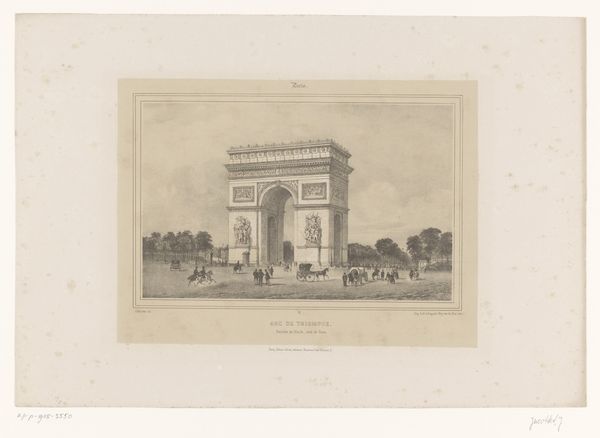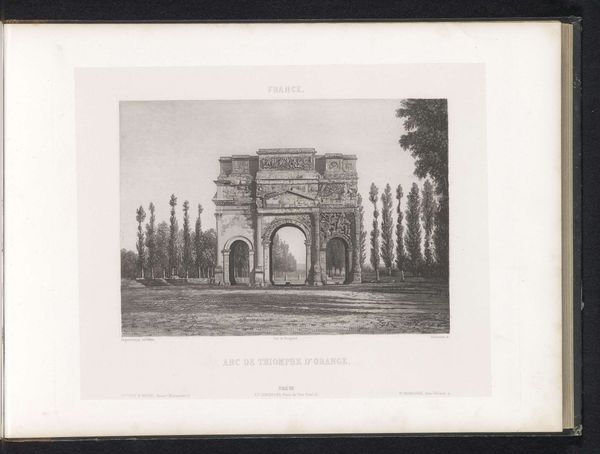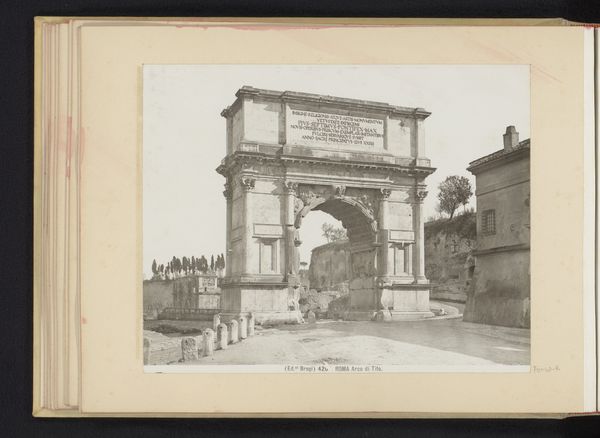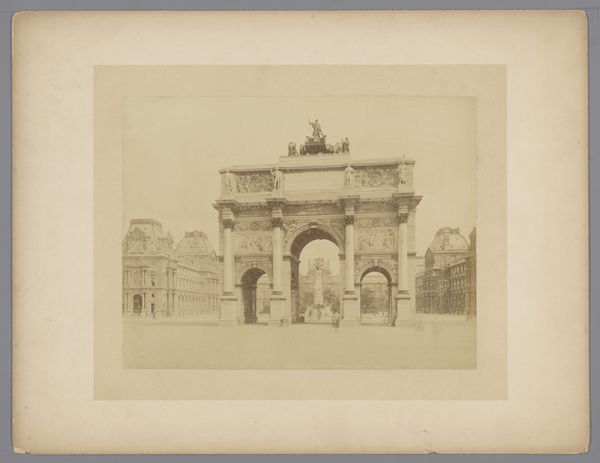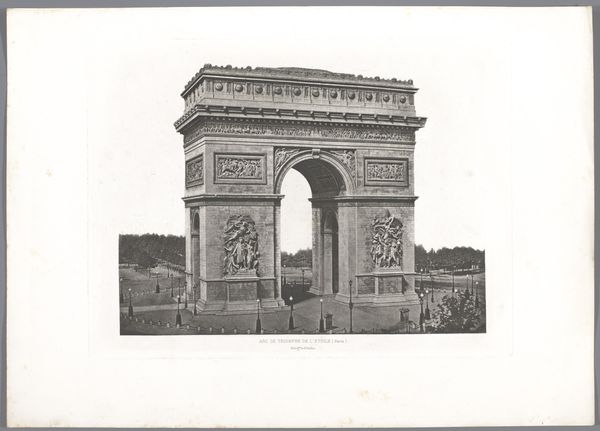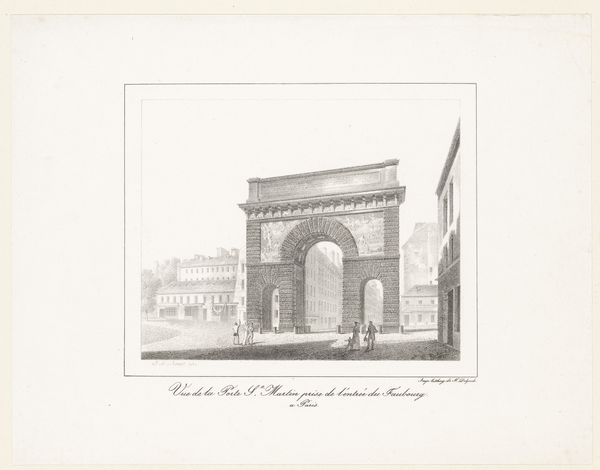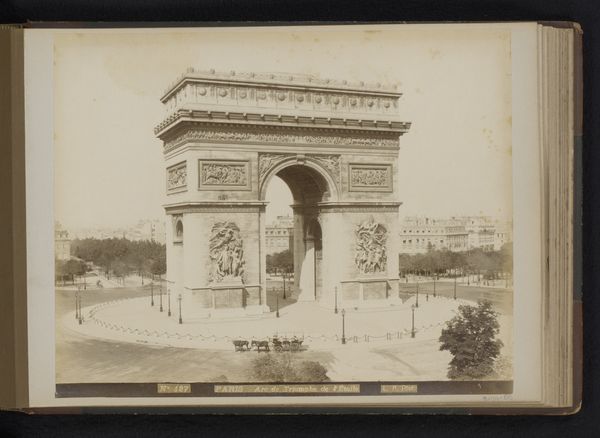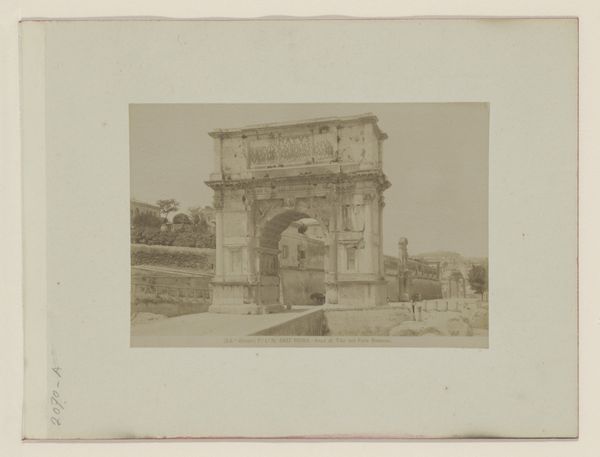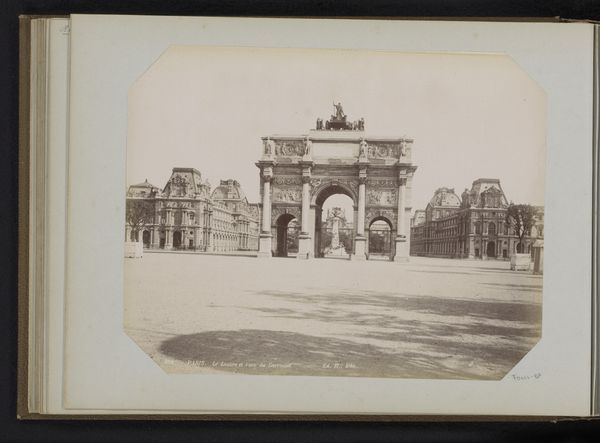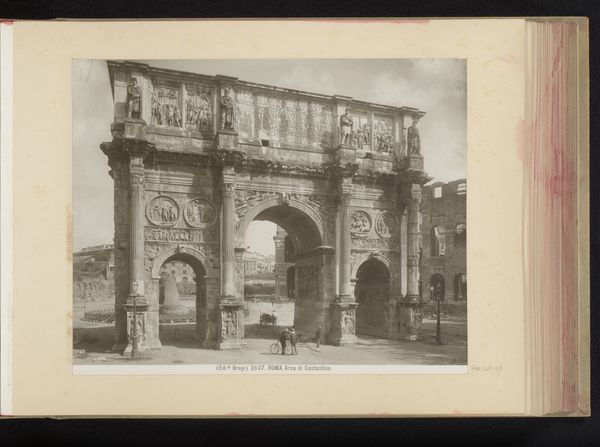
aquatint, print, etching, engraving
#
aquatint
#
neoclacissism
# print
#
etching
#
landscape
#
cityscape
#
engraving
#
watercolor
Dimensions: height 146 mm, width 204 mm
Copyright: Rijks Museum: Open Domain
Editor: This print, "Gezicht op de Arc de Triomphe te Parijs," by Johann Hürlimann, created before 1841, is made with aquatint, etching, and engraving. The scene has a serene, almost dreamlike quality, despite depicting a monumental structure. What's the historical context of depicting such a recognizable landmark using these techniques? Curator: This image offers a fascinating look at the Arc de Triomphe and its role in shaping Parisian identity and collective memory. Consider the context: completed in the 1830s, the Arc stood as a symbol of Napoleonic grandeur and national ambition during a period of significant political upheaval. Its duplication as print, etching and engraving made it widely accessible to a growing middle class, further democratizing its image. These prints disseminated the state-sponsored ideology, while turning the Arc into a sought after memento for tourists. Editor: So the choice of medium - aquatint, etching, and engraving – was part of democratizing the image, but did it influence its interpretation? Curator: Absolutely. These printmaking techniques allowed for the mass reproduction and circulation of the image, embedding it in popular consciousness. But it also presented a somewhat sanitized view of power. Did these idealized depictions influence public perception, maybe even suppressing dissenting voices about the Arc's original intent? Editor: That makes me think about how images are used to control narratives. So this image, and the method by which it was distributed, is not just about recording history but shaping it. Curator: Precisely. We should think about how the power to create and disseminate images impacts how we understand our world. Editor: I didn’t think about it like that, but this makes it much more fascinating to consider. Curator: Indeed, paying attention to distribution and consumption practices helps unpack the public role of art.
Comments
No comments
Be the first to comment and join the conversation on the ultimate creative platform.
